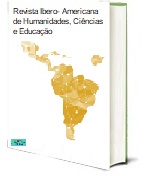THE PROHIBITION OF MARRIAGE FOR UNDER 16 YEARS OLD
DOI:
https://doi.org/10.51891/rease.v8i7.6272Keywords:
Pregnancy. Placements. Principles.Abstract
Previously, marriage permission for those who have not yet reached marriageable age had some disadvantages, such as; the abandonment of studies to search for a job, problems in pregnancy because the pregnant woman's human body at this age is not prepared to generate the life of a baby, which may have sequelae for both the mother and the child. The study was carried out based on the doctrines of Maria Berenice Dias, Flavio Tartuce, Paulo Nader and positions of renowned doctors who spoke out in favor of law 13.811/2019, as they already knew the health risks that were presented during pregnancy, ecamplysis, pre -eclampsia, postpartum depression, anemia, premature death and others that will be addressed. The results achieved were that, even residing in the country, there are different positions between the family that lives in a metropolitan capital in the southeast region and the traditional family that lives in the region of the northeast region. Unfortunately, with the publication of this law, some principles of human dignity were violated, but its publication brought benefits to Brazilian health.
Downloads
Downloads
Published
How to Cite
Issue
Section
Categories
License
Atribuição CC BY

